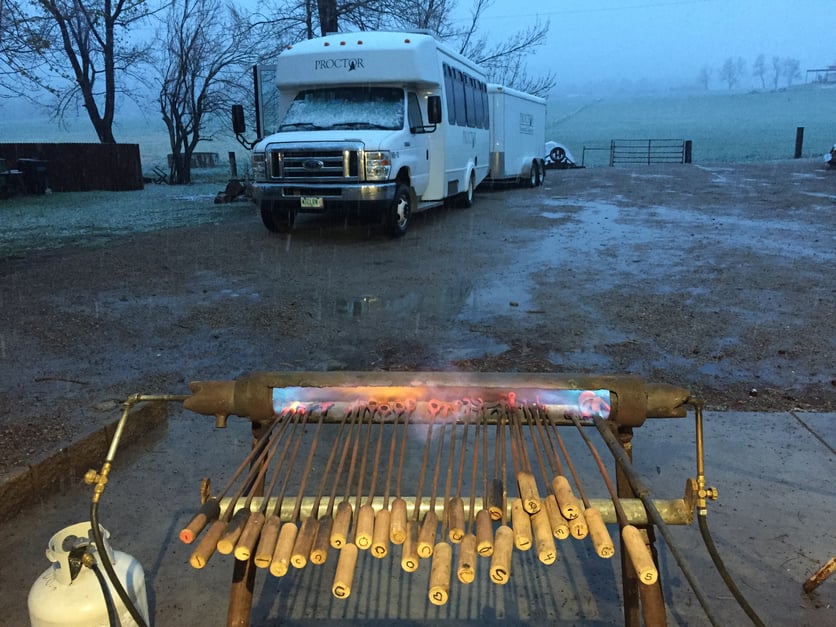Proctor math teachers, Kristen Martin and Chris Farrell, joined Mountain Classroom in Salida, CO for a weekend of hiking, soaking in hot springs, seeing downtown, and mountain biking. From Salida we drove southeast to the beautiful Beulah Valley where we were hosted by Linda and David Overlin. The Overlins have a wealth of knowledge on ranching and the surrounding grasslands and are skilled craftspeople. They welcomed us to camp in their backyard while guiding us through projects in their wood and metal shop.
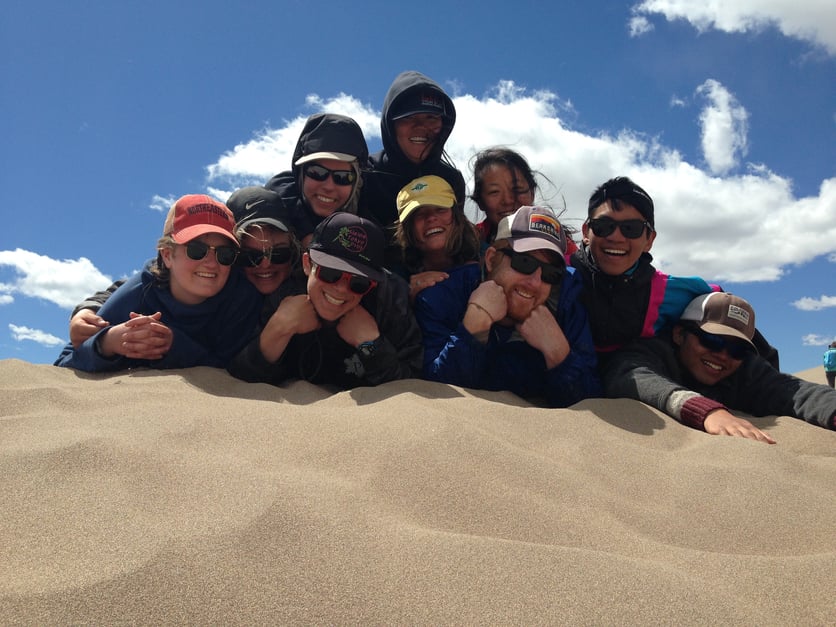
Theresa ’19:
As we transition out of our incredible, but also physically demanding skiing trip, we all get to rest for some days in Salida, a small town in Colorado. While Coco and Timbah are writing our midterm comments we welcome Chris and Kristin as our guests and temporary instructors, which also means that we, as a group, get to practice our jobs without any additional help. Hearing about Proctor and receiving many letters is very exciting for all of us. Thank you all so much for thinking about us while we are still so far from New Hampshire.
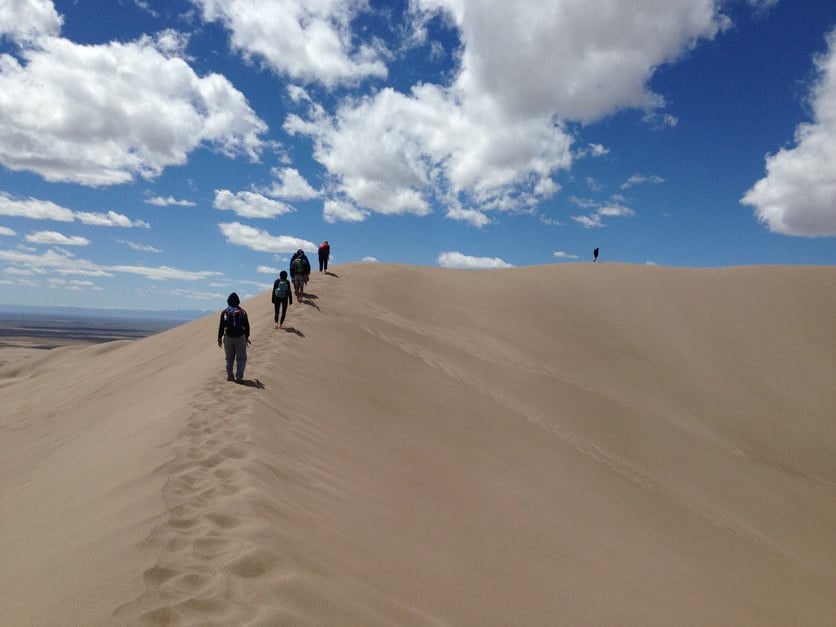
Chris and Kristen not only brought us mail, but they also know a lot about the region in which we are camping. They took us to the Great Sand Dunes National Park, which lies right next to the Sangre de Cristo Mountains. This National Park includes North America’s tallest dunes that were built with the sand from the San Juan Mountains approximately 440,000 years ago.
From far away we can already see these huge dunes, shaped like waves by the wind. As we drive closer I notice some dark dots high up the dunes, which turn out to be hikers. Inspired by them, we step into the visitor center to choose a hike. After receiving information about the seven different life zones, formation of the dunes, and the variety of species that have adapted to this unique environment, we decide to hike up one of the highest sand dunes, which should not take us more than an hour.
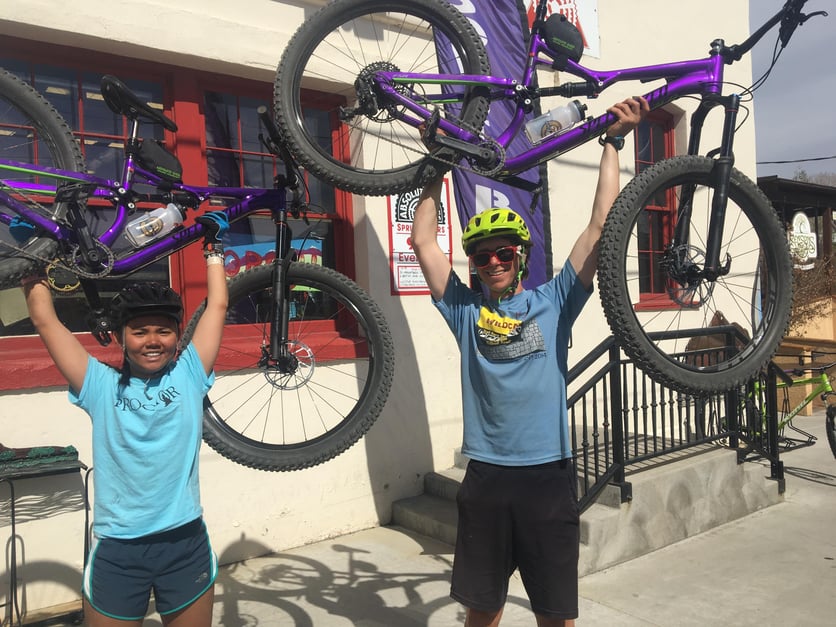
As we start our adventure equipped with two sleds, we realize how much nicer it is to go barefoot on the sand. In order to hike up the dune we have to pass one of the two streams that encompass the dunes. These streams play an essential part in maintaining the dunes by preventing the sand from being blown away. Then we begin to hike up, and we can see all that we were introduced to in the visitor center, for example one of the species that has adapted to the environment called the tiger beetle. It does not take us a long to try the sleds for the first time. Sledding down steep slopes as fast as on snow reminds many of us of our childhood. After an hour, we still have to stretch our heads to be able to see the top of the sand dune. But our excitement keeps us from giving up on reaching the top. Finally we are getting closer to our destination, and at the same time the wind, filled with thousands of sand particles, increases. At the summit we look down to where we started and admire the mountains where we have been skiing, and we almost get buried in sand. Hiking down while sledding does not take us nearly as much time as hiking up. After a tasty lunch made by our cooks for today, Chloe and Spencer, we arrived back at our campsite.
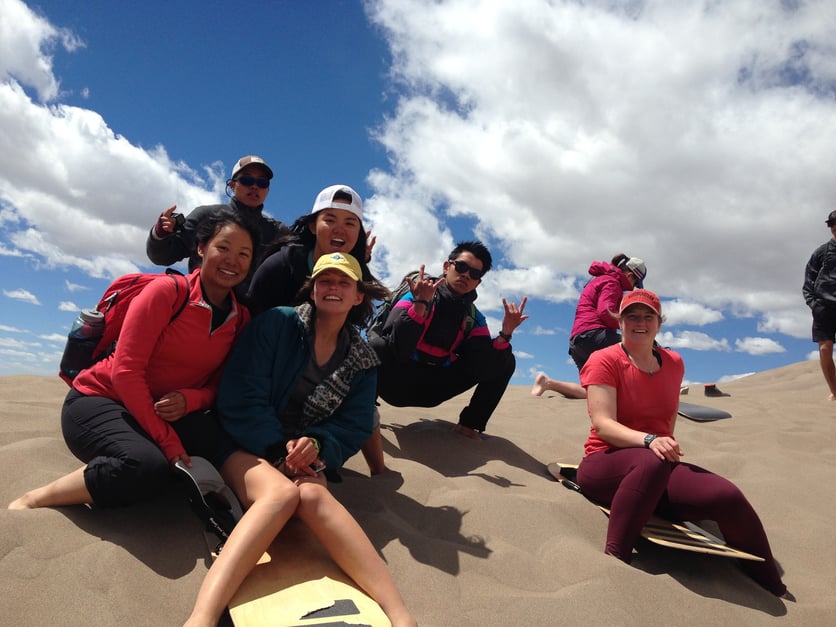
One day on Mountain Classroom feels so much longer than a usual day. Within the few days that Chris and Kristin spent with us, they did not stay our guests, but became part of our small community. We now share incredible memories such as our day trip to the sand dunes, and, once again, I am reminded of how much more we can discover and learn together in nature.
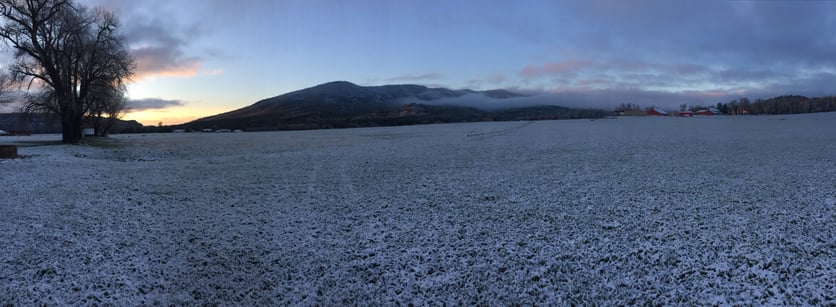
Kelly ’17:
Beulah Valley welcomed our group with raging wind. As soon as we finished setting up our tents, the effect of the wind was shown clearly by the slightly deformed poles and the flapping sound of the tent flies. A vast pasture surrounded us with a red barn that stood in sharp contrast to the greenness. We were on the Overlin’s property in the middle of Colorado. Dave, a witty and humorous middle-aged artist, and his wife Linda, a fellow artist with a similarly generous spirit, have lived in Colorado for decades. They excitedly welcomed us and toured us around their beautiful home filled with furniture and art made by them.
In the evening, Linda and Dave gave us an introduction to the machines in their woodshop. The woodshop was saturated with sawdust and the aroma of a number of different types of woods. While I was dazzled by the modern technology, Dave reminded us of using the equipment safely, “In woodworking, it’s all about concentration. If you are not patient enough, you could end up with some kind of injury,” he said as he pointed to the table saw, “this could probably chop off your fingers.”
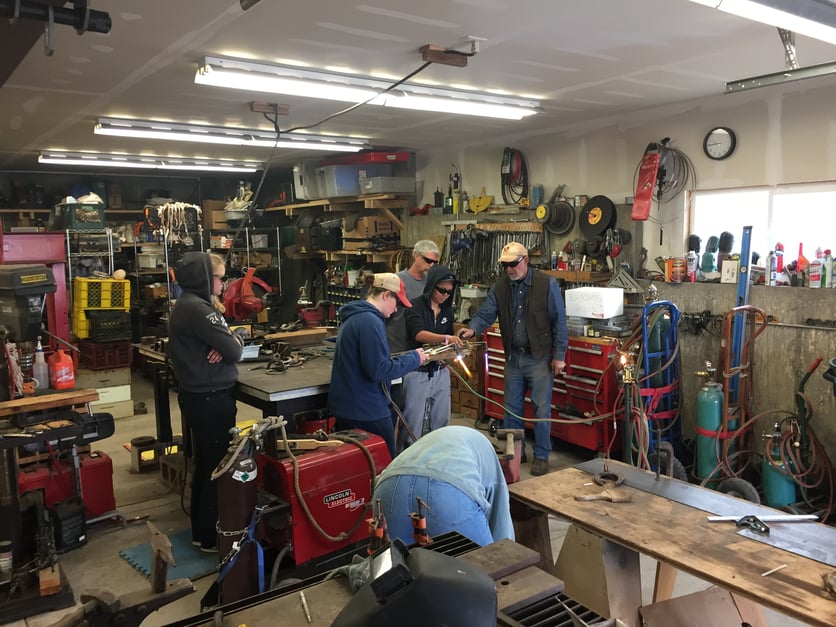
It truly was easy to hurt oneself in the wood shop. Most saws, spindles, and drills could spin at a speed of several hundred revolutions per second. Even before our brain could sense the danger and manage to send out a signal to our muscles, the blades would ruthlessly make us bleed. But the potential danger was not one of our worries tonight. What Theresa and I worried about was how should we glue our wood blocks into cutting boards, an essential step in making our “friendship cutting boards.” In order to make paired cheeseboards, the two partners need to have two starting boards of similar size, cut the same shape out of both boards and exchange pieces with each other. I partnered up with Theresa, who proposed that we arrange our wood blocks in a reversed order in hopes that after we exchanged the cutout patterns we would have a symmetrical and artsy final product. We brushed the glue onto the side of the wood blocks and clamped them on. Everything was planned based on imagination; nobody knows what the end product is until it is finished. The anticipation is the exciting part, and the beauty is in the unknown.
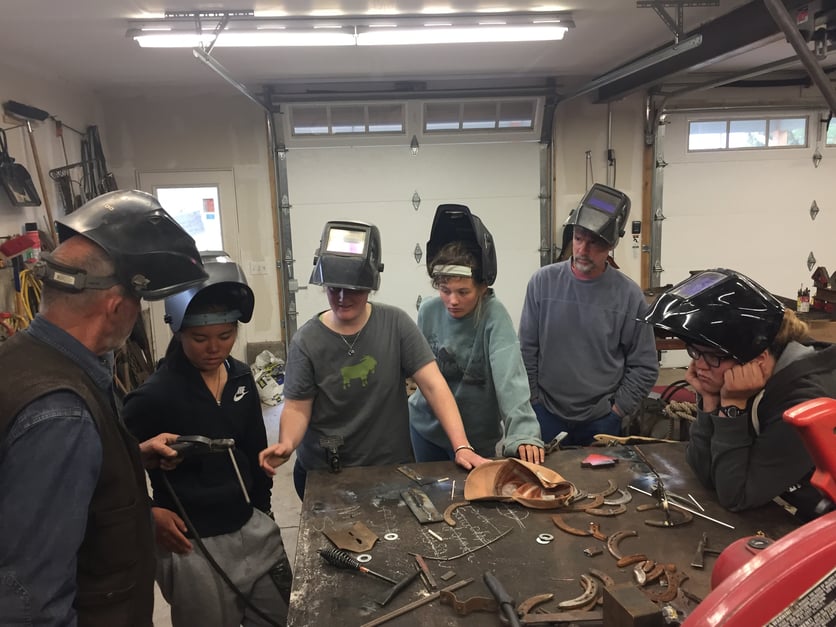
The next morning when we walked into the shop, I was feeling more nervous than professional in the green coat and the pair of goggles. The table saw sat still and looked harmless when it was stopped. With Linda’s instructions, I slowly and carefully pushed my board through to smooth the edge. I was too focused to know what kind of pattern the wood dust made in the air. It was a good step in getting over my fear by using the most dangerous machine in the shop. Theresa and I moved smoothly to the band saw and the sander, with less nervousness but the same amount of caution. We felt relief and excitement in the moment when we switched our cutout mountain patterns for our cutting boards—we made a wise and artsy decision!
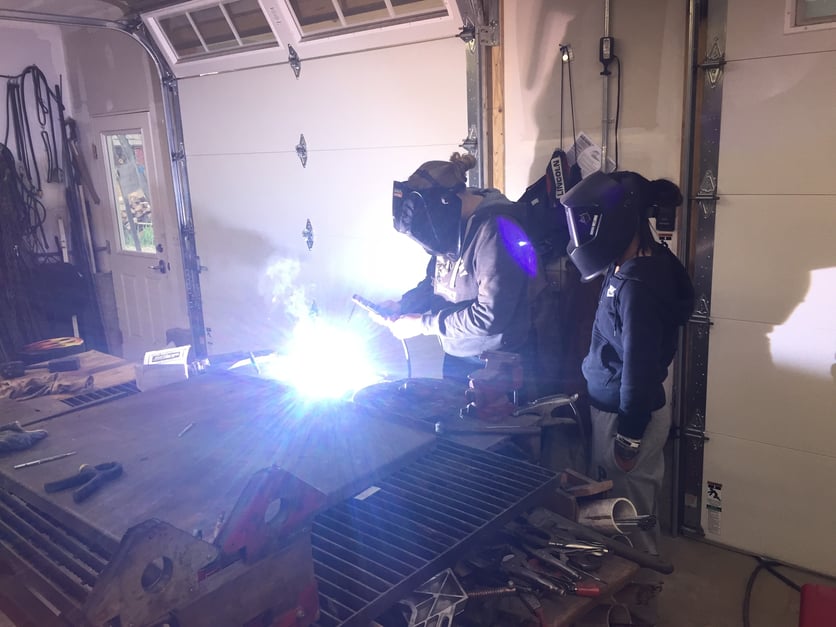
The rest of the sanding process required nothing more than patience. It reminded me of woods team adventures with Dave Pilla on campus. We were not allowed to run while working, even if the workload seemed more than we could accomplish, especially when Dave was using the chain saw. I still remember Dave’s famous quote: “Do not rush, whatever needs to be done will always get done if you are focused.” Theresa and I were focused, thus we not only finished our “friendship cutting boards” without any injuries, but we also made time for individual projects. I made a spatula for my mom that has the same shape as the one she always uses at home. Both projects increased in fun as I established a rhythm with the sander. The wood dust splashed onto my goggles and blurred my vision. At the end of the woodworking session, I was told that I looked fresh from Joan Saunders’ costuming hands with the hair style of a seventy-year-old lady—saw dust is magical!
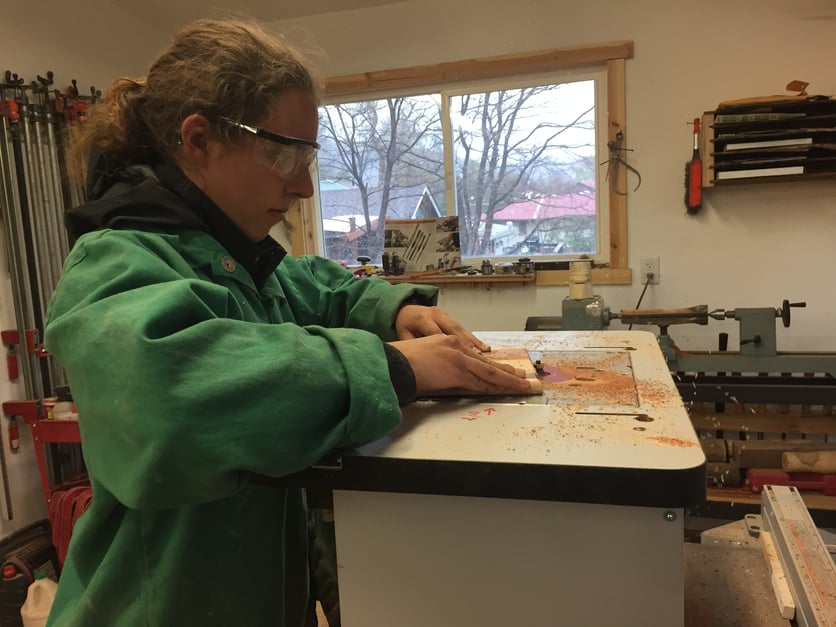
We only stayed with Dave and Linda for a day and a half, but this experience has been life changing. Meeting new guests is always exciting on Mountain Classroom; I love listening to their stories and learning from their varied skills. Our group is fortunate to have met amazing people like Dave and Linda across the country, and we will not take these experiences for granted. While remaining humble and appreciative as we continue on our mountain journey, we will also be curious and critical as we explore. Woodworking is a small taste of two months of diverse classes on Mountain Classroom, and we will continue to hone all the key qualities in our classes that we need to thrive in our lives.
